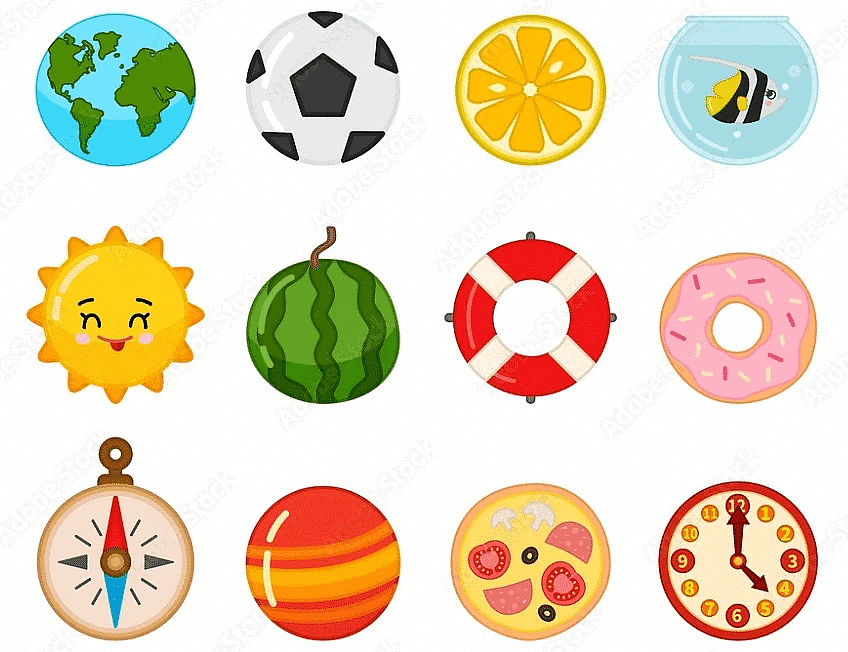Chapter notes: Shapes | Mental Maths - Class 1 PDF Download
| Table of contents |

|
| What are Shapes? |

|
| Different Types of Shapes: |

|
| Circle: |

|
| Oval: |

|
| Square: |

|
| Triangle: |

|
| Rectangle: |

|
| Counting Shapes: |

|
| Edges and Corners: |

|
| Patterns: |

|
What are Shapes?
Shapes are the outlines or boundaries of objects. Every object that we see around us has some sort of shape; They are made by combining curves, points, and lines. We see shapes all around us, like circles, squares, rectangles, and triangles: like the rotis we eat are round, the geometry box we use is a rectangle, the box of your pizza is a square, etc.
 Different Types of Shapes:
Different Types of Shapes:
Shapes are classified into two main types:
Open Shapes: These shapes are made of line segments or curves that don't connect or form a closed loop, like the letter 'C'.
 Closed Shapes: These shapes are continuous and form a closed loop, like the letter 'D'.
Closed Shapes: These shapes are continuous and form a closed loop, like the letter 'D'. Examples:
Examples:
- Open shape: 'C'
- Closed shapes: 'D', 'O', 'B'
Circle:
- A circle is a perfectly round shape with no corners or edges.
- Think of it like a pizza base or a steering wheel.
- Its boundary is equidistant from its center point, making it symmetrical in all directions.

Oval:
- An oval is like a stretched-out circle, elongated in one direction.
- It resembles the shape of the number '0'.
- While it maintains a curved outline like a circle, it's not perfectly symmetrical.
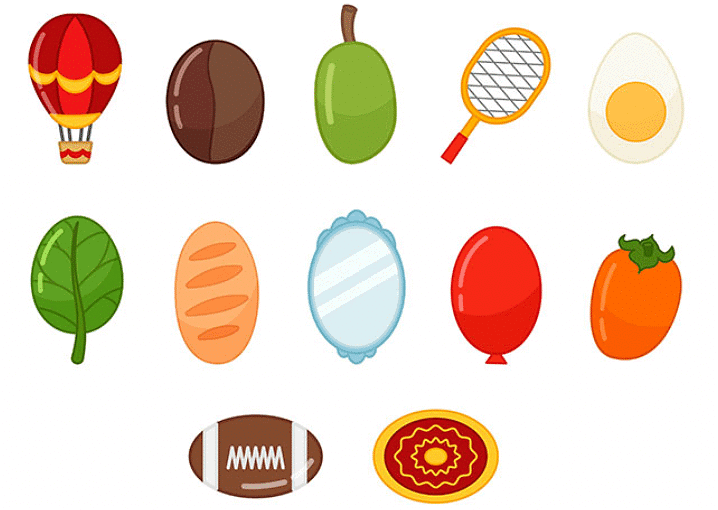
Square:
- A square is a four-sided polygon with all sides equal in length and all angles at 90 degrees.
- It has four corners where the sides meet.
- Picture a chessboard or a carrom board, both of which are divided into equal squares.

Triangle:
- A triangle is a polygon with three sides and three angles.
- Each side connects to the other two at their endpoints.
- Visualize a slice of pizza or a nacho chip, both of which often have triangular shapes.
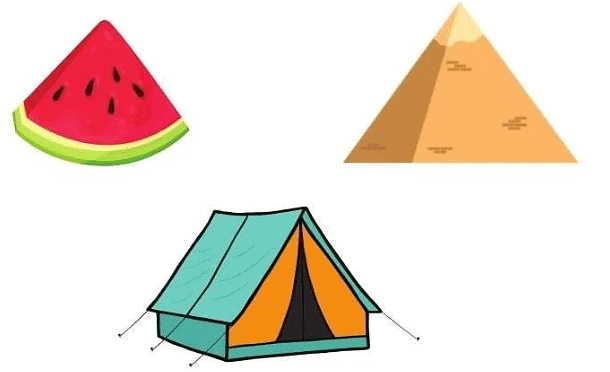
Rectangle:
- A rectangle is a quadrilateral with four sides and four angles, where opposite sides are equal in length.
- It has four right angles (90 degrees each).
- Think of a laptop screen or a phone screen, which are rectangular in shape.
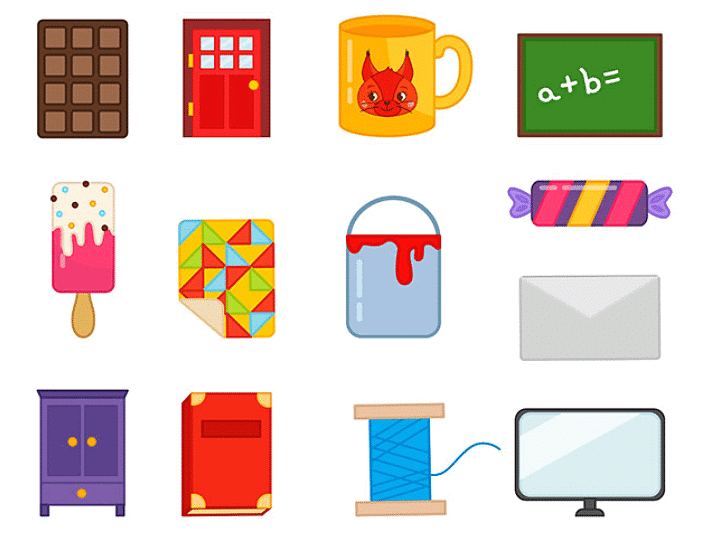
Counting Shapes:
We can count shapes by adding up smaller shapes. For example, to count triangles, we add the numbers on their bases.
You might come across various questions, where you are asked to find the number of triangles, squares or rectangles, etc. in a given figure, So, how would we deal with them? Let's find out:
Example: Harsh wants to count the number of triangles present in the figure below?
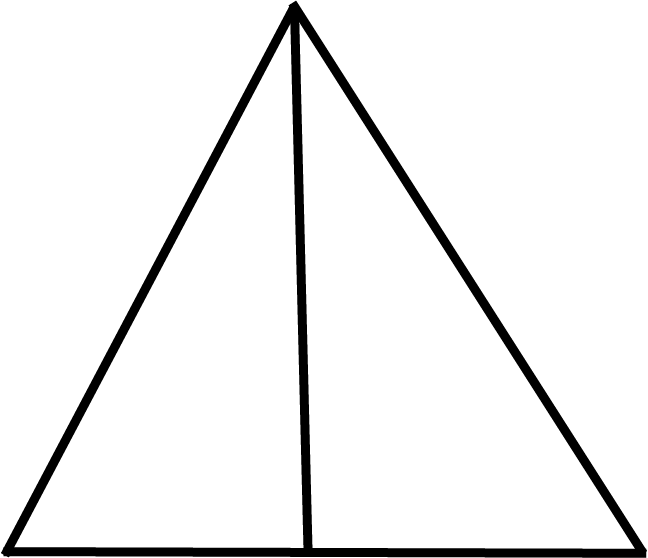
Step 1: Recognizing Shapes
Harsh examines the image, focusing solely on the shapes present. In this particular image, he notices that only triangles are visible. Triangles, with their three sides, are distinctive geometric figures.
Step 2: Assigning Numbers
Harsh then proceeds to mark each triangle's base with a corresponding number. This step helps him keep track of the individual triangles and their bases.
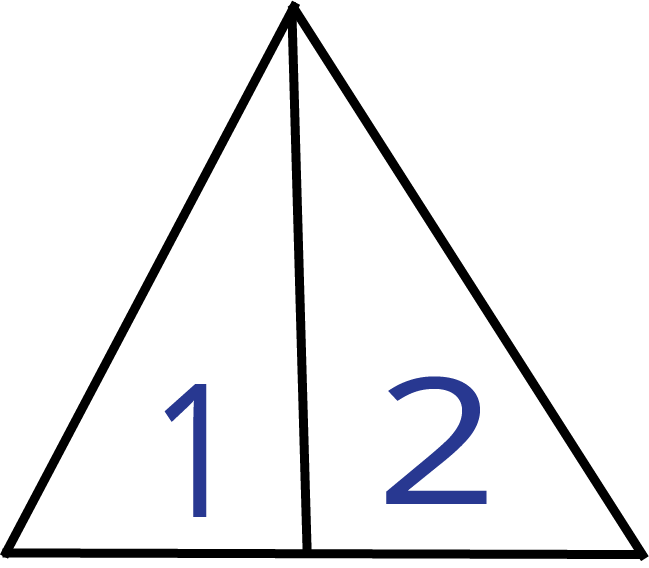
Step 3: Totaling Triangles
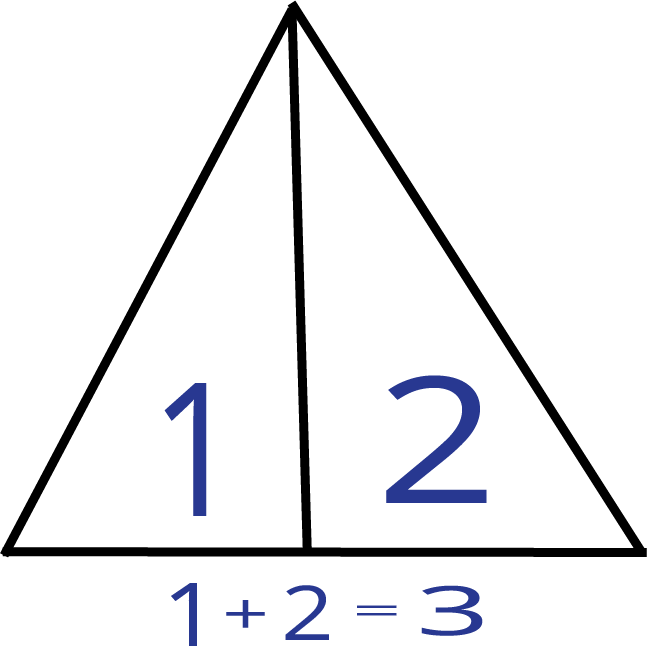
The Final Tally
After careful calculation, Harsh arrives at a total count of 3 triangles. These triangles, although varying in size and orientation, collectively contribute to the geometric composition of the image.
So, the total number of triangles present in the image is 3.
Let's see another Example
Example: Count the number of triangles present in the given image?
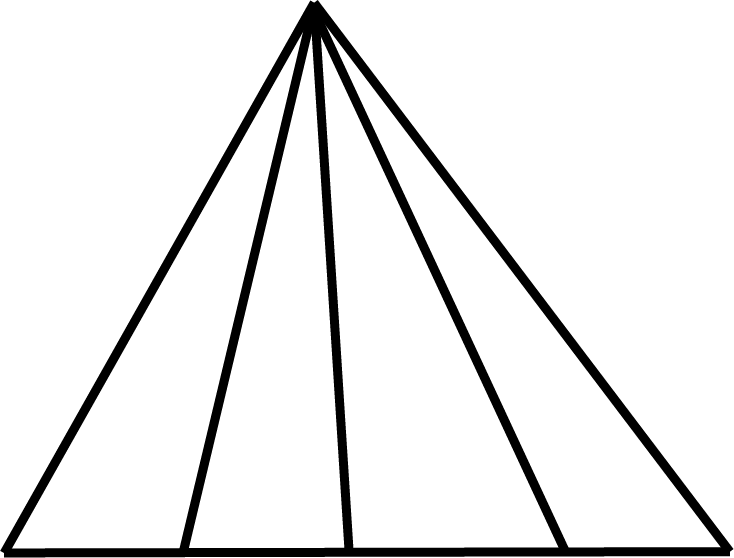
Ans: Here, we want to count the total number of triangles present in the image. So, we will use the concept of counting shapes to find how many triangles are present:
Step1: Identify the different shapes present in the image. Here, in the above image, only triangles are present.
Step2: Add the numbers to the base of the small triangles.
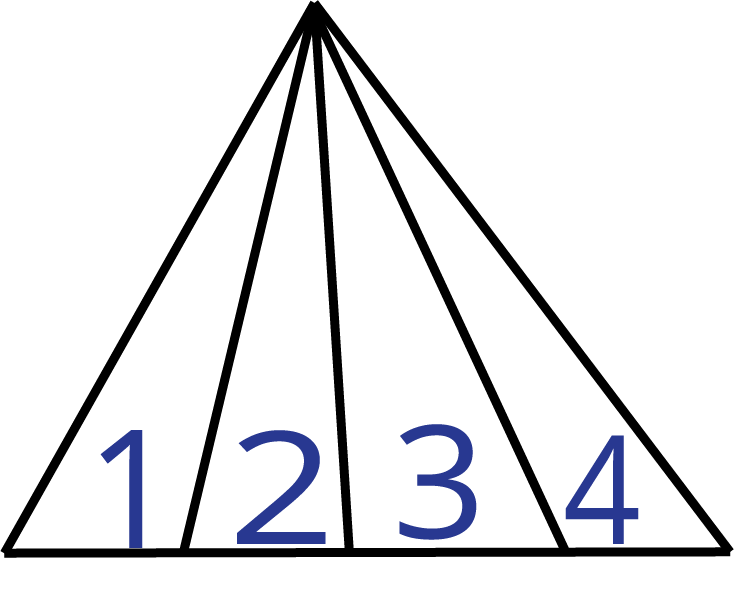
Base Triangle
Step3: To calculate the total number of triangles, add base numbers.
= 4+3+2+1=10
Total number of triangles = 10
So, the total number of triangles present in the image is 10.
Example: Riya wants to count the number of triangles present in the given image?
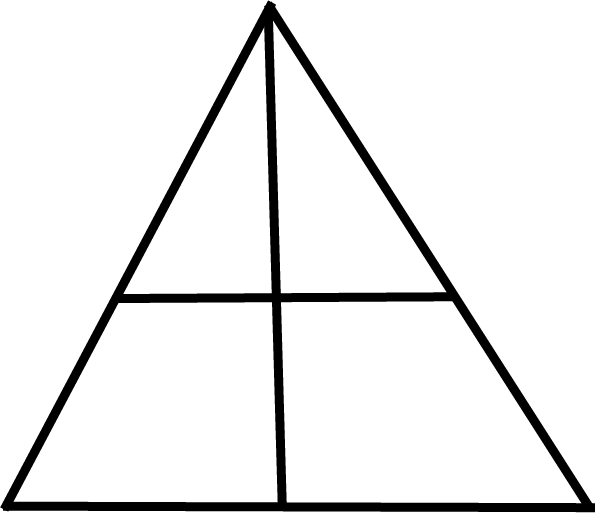
Step1: Identify the different shapes present in the image. Here, in the above image, only triangles are present.
Step2: Add the numbers to the base of the small triangles. Here, we have 2 small triangles in the first layer and 2 small triangles in the second layer.
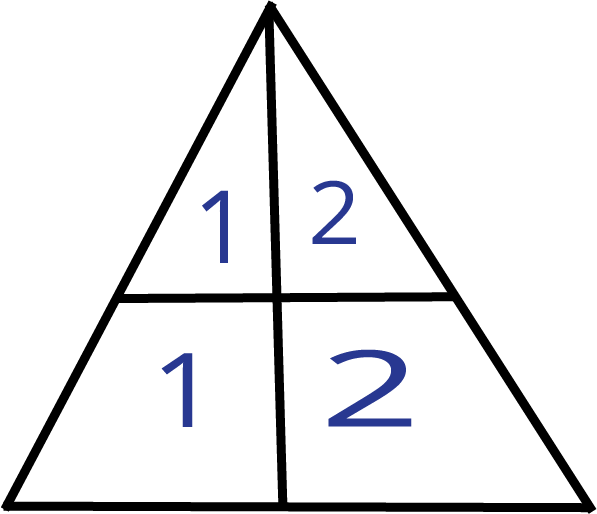
Step3: To calculate the total number of triangles, add base numbers present on each layer.

Addition of base triangle
Number of triangles in the first layer = 3
Number of triangles in the second layer = 3
Total number of triangles in both layers = 3+3 = 6
So, the total number of triangles present in the image is 6.
A similar strategy can be used to find out other shapes in a given figure as well. Why not try one out yourself:
Find the number of rectangles in the given figure.
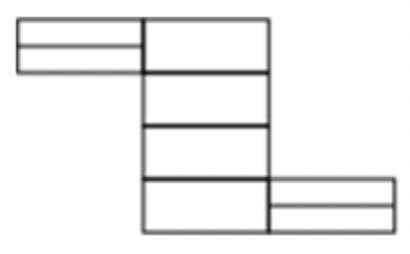
Hint:
4 thin rectangles + 6 thick rectangles + 5 rectangles (made of 2 thick rectangles) + 2 rectangles (made of 3 thick rectangles) + 1 rectangle (made of 4 thick rectangles) = 18 rectangles.
Edges and Corners:
Edges are the lines that outline a shape, like the sides of a square. Corners or Vertex are where these edges meet, like the corners of a rectangle.
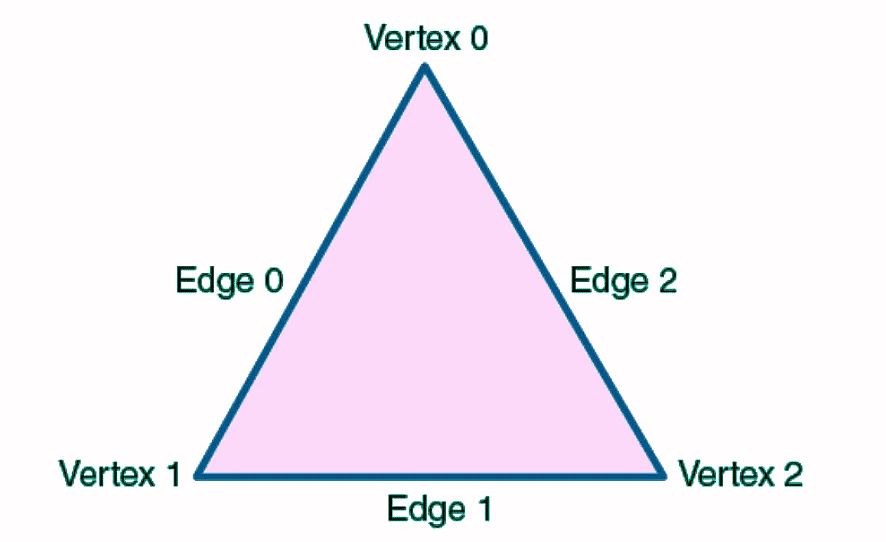
Patterns:
We can create different designs by arranging shapes in patterns. This could be weaving patterns, tiling patterns, or floor patterns.
- Patterns of Shapes

- Patterns of Sizes

|
29 videos|64 docs|19 tests
|
FAQs on Chapter notes: Shapes - Mental Maths - Class 1
| 1. What is the definition of a shape? |  |
| 2. How many types of shapes are mentioned in the article? |  |
| 3. What is the difference between edges and corners in shapes? |  |
| 4. How can shapes be used for counting? |  |
| 5. How can patterns be related to shapes? |  |

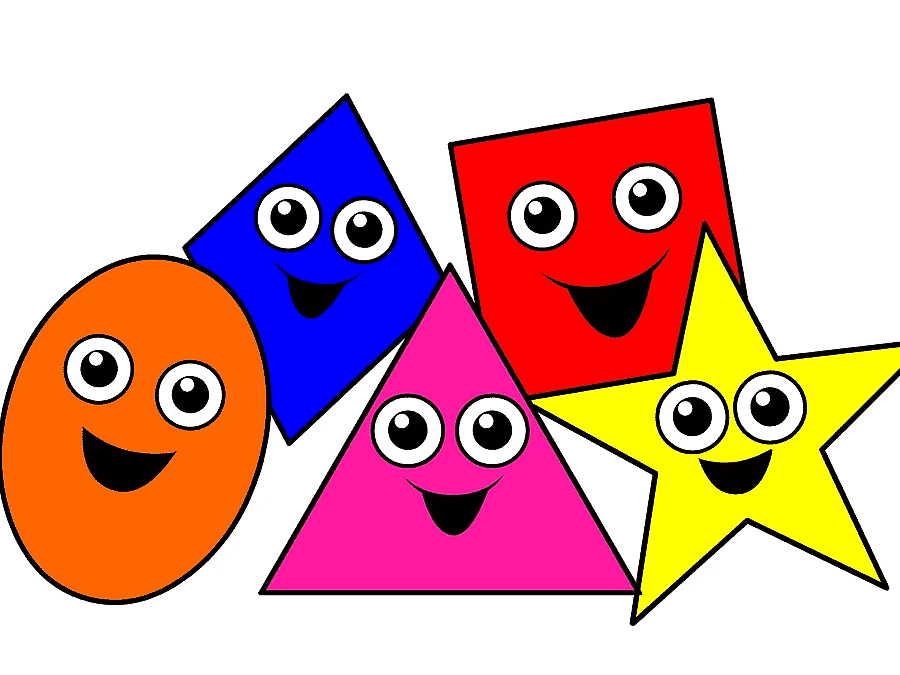 Different Types of Shapes:
Different Types of Shapes: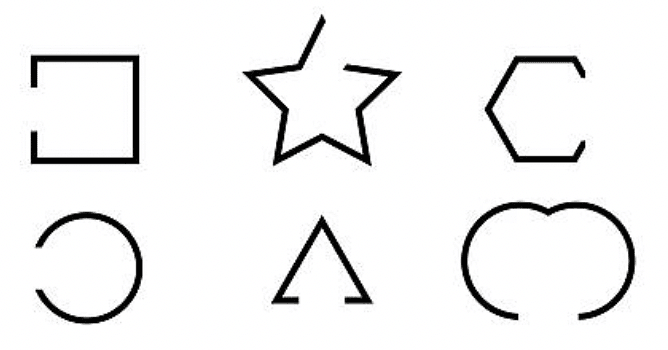 Closed Shapes: These shapes are continuous and form a closed loop, like the letter 'D'.
Closed Shapes: These shapes are continuous and form a closed loop, like the letter 'D'.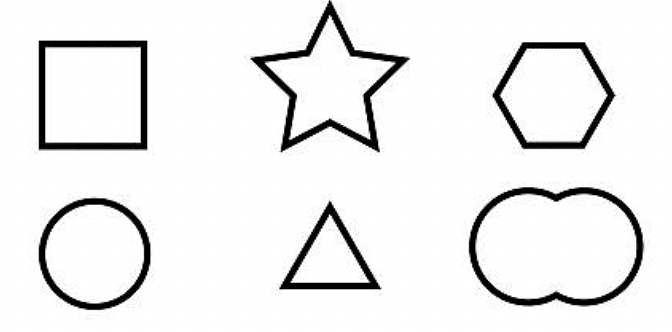 Examples:
Examples: